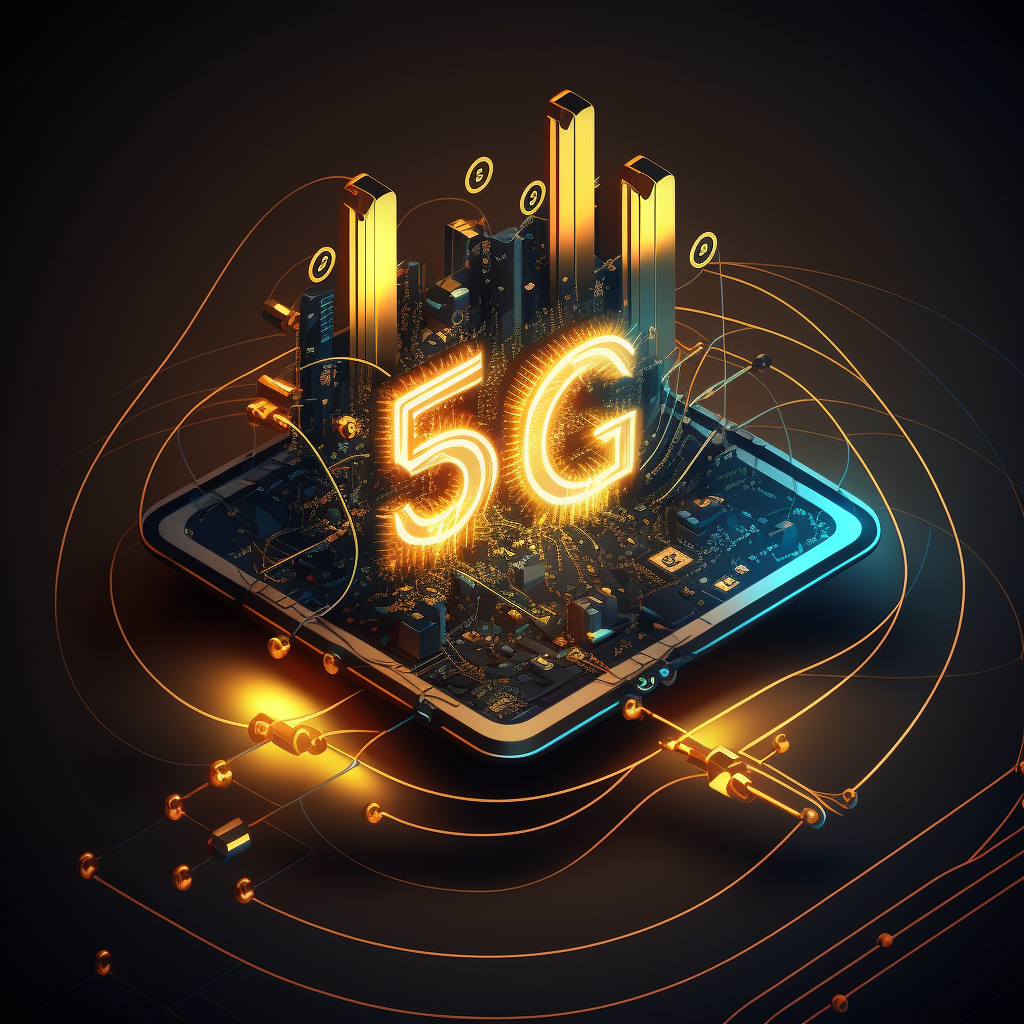5G (fifth-generation) technology promises to bring about significant improvements in speed, latency, and connectivity for IoT (Internet of Things) devices and other connected systems. However, 5G also presents new cybersecurity risks and challenges.
How 5G network works?
A 5G (fifth-generation) network is a wireless network technology that provides faster data speeds, lower latency, and improved capacity compared to previous generations of cellular networks.
Here is a brief overview of how a 5G network works:
- Radio Access Network (RAN): The RAN is the part of the 5G network that connects devices to the core network. It consists of base stations (or small cells) that communicate with 5G-enabled devices using radio waves.
- Core Network: The core network is responsible for managing the flow of data between devices and the wider internet. It includes routers, switches, and servers that control the flow of data and ensure that it is securely transmitted between devices.
- Spectrum: 5G networks use higher frequency bands (millimetre wave) in addition to lower frequency bands used by previous generations of cellular networks. This enables the 5G network to deliver faster data speeds and more bandwidth.
- Multiple Input, Multiple Output (MIMO): 5G networks use MIMO technology, which enables the use of multiple antennas at both the device and base station to improve the reliability and speed of the connection.
- Network Slicing: 5G networks use network slicing to create multiple virtual networks on a single physical network, enabling different services to be delivered to different devices with different performance requirements.
- Software-Defined Networking (SDN): 5G networks use SDN technology, which enables the network to be dynamically configured and managed using software.
Here are some of the key ways that 5G technology affects cybersecurity:
- Increased Connectivity: 5G technology will greatly increase the number of connected devices and systems, creating a larger attack surface for cyber criminals.
- Complexity: 5G networks are more complex than previous generations of networks, increasing the risk of vulnerabilities and making it more difficult to detect and respond to attacks.
- Latency: Low latency is a key benefit of 5G technology, but it also means that malicious actors can launch attacks more quickly and with greater impact.
- Enhanced Mobile Broadband (eMBB): The eMBB component of 5G technology increases the risk of data breaches and unauthorized access to sensitive information, as more personal and business data is transmitted over the network.
- Increased Risks for IoT Devices: 5G will enable a large increase in the number of IoT devices, creating new security risks as these devices collect and exchange sensitive information.
What are the Cybersecurity risks over 5G?
The increased connectivity and complexity of 5G (fifth-generation) technology presents several new and emerging cybersecurity risks, including:
- Increased Threat Surface: 5G networks will support a much larger number of connected devices, increasing the attack surface for cyber criminals.
- New Types of Attacks: 5G technology introduces new types of attacks, such as radio jamming and spoofing, that can disrupt network connectivity and steal sensitive information.
- Increased Vulnerability to Distributed Denial of Service (DDoS) Attacks: 5G networks have the potential to be more vulnerable to DDoS attacks, which can overload networks and cause widespread disruptions.
- Risk to Critical Infrastructure: 5G technology is expected to play a major role in critical infrastructure, such as transportation and energy systems, making these systems more vulnerable to cyber-attacks and data breaches.
- Lack of Standardization: The 5G ecosystem is still evolving, and there is a lack of standardization in the technology, making it more difficult to ensure interoperability and security across devices and networks.
- Interoperability Issues: As 5G technology is still in its early stages, there are concerns about compatibility and interoperability between different 5G devices and networks, increasing the risk of security breaches.
What are Cybersecurity mitigations over 5G?
To mitigate the cybersecurity risks associated with 5G (fifth-generation) technology, organizations can take the following steps:
- Implement Secure Design: Adopt secure design principles for 5G devices and networks, including secure boot processes, encrypted communications, and secure update mechanisms.
- Enhance Network Security: Strengthen the security of 5G networks using firewalls, intrusion detection systems, and encryption technologies.
- Implement Device Management: Adopt effective device management practices, including device registration, remote management, and over-the-air (OTA) updates to ensure the security of 5G devices.
- Monitor Network Traffic: Monitor network traffic to detect and respond to potential security threats, such as DDoS attacks and unauthorized access attempts.
- Develop Incident Response Plans: Develop and implement incident response plans to ensure that organizations can quickly and effectively respond to security incidents.
- Conduct Regular Security Audits: Regularly audit and test the security of 5G devices and networks to identify and remediate vulnerabilities.
- Last but not least Staying informed about the latest developments in 5G cybersecurity and emerging threats, and work with trusted vendors and service providers to ensure the security of your network and devices.
Conclusion on Cybersecurity and 5G:
5G networks are designed to deliver faster, more reliable, and more secure wireless connectivity to support the growing demands of connected devices and services. By leveraging advanced technologies such as MIMO, network slicing, and SDN, 5G networks enable organizations to take advantage of new opportunities and innovations in the digital world.
It is important for organizations to adopt a comprehensive cybersecurity strategy that includes secure hardware and software design, network security, device management, and incident response planning. Additionally, it is important for organizations to stay informed about the latest developments in 5G cybersecurity and to partner with trusted vendors and service providers to ensure the security of their networks and devices.
And organizations must be proactive in addressing the cybersecurity risks associated with 5G technology to ensure the security of their networks and devices. By taking a comprehensive approach to cybersecurity and partnering with trusted vendors, organizations can minimize the risks and reap the benefits of 5G technology.
